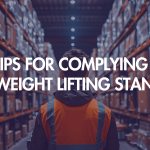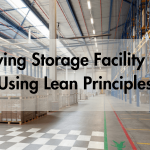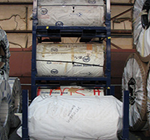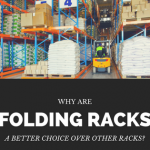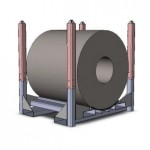Pallet Racking Vs Floor Stacking: What You Must Know?
If you are a manufacturer, and need to store your parts in inventory for a certain period, you would know the way they need to be arranged on shelves. This is irrespective of the fact if you have your own warehouse or you opt for third party services for your inventory. Warehouse storage is an extremely crucial aspect of the manufacturing and supply chain processes, at least till the items are shipped out. There are various storage units such as pallet racks and shelves as well as floor stacking. So, what is the difference between pallet racking and floor stacking, and which one is best for you? This post discusses just the same.
Warehouse Pallet Racking Vs Floor Stacking: Which One is Better?
There are various ways to store your inventory such as parts in progress, as well as completed parts in an organized manner. It may require significant investment, but is often a long-term solution to all your warehouse storage issues. Floor stacking is relatively a cheaper option; however, it may not be suitable in all situations. Here are some pointers on both these storage types:
- The advantages in floor stacking are that it is inexpensive, as you need no pallet racks.
- Floor stacking although inexpensive works well for same type of products that do not expire easily or demand first in first out (FIFO).
- Floor stacking follows the last in, first out (LIFO) method and is considered better for products that aren’t sensitive and largely non-perishable, too.
- The disadvantage is that you need good enough availability of space to store in this manner.
- All you need to do is place the pallets on the floor and store the materials based on the height and breadth of the pallet.
- Pallet racking or shelving needs initial investment but is definitely a better solution.
- Also, you can manage to store plenty of materials in small and compact spaces if you can organize the shelving well.
- The parts you need frequently are the ones to be loaded onto containers can be arranged in the front lines. The ones which are not required in the near future can be stored towards the end.
- This also depends on the weight and quantity of the parts and the load bearing capacity of the racks or pallets.
- In case of a pallet racking system, you may require forklifts and other material handling equipment, especially to lift or remove bulky materials from cramped up spaces without damaging the other materials.
- Proper pallet racking ensures workplace safety from the point of view of the workers as well as materials.
- Since the materials or parts are arranged in an orderly manner, it saves loss of production time.
- It helps reduce operational costs and the ones, which may incur due to product falls and damage.
- The only disadvantage here is you would require to carry out regular warehouse inspections and audits to check that the parts or their order is not messed up. Also, it is required so that actual numbers or quantities of parts available can be matched to the required ones. Such audits also help check if there is damage to any of the parts. So, actually, this inspection process may be a bit tedious but proven to be beneficial in the long run.
The choice between pallet racking vs floor stacking would largely depend on the type of material or components you want to store and many such factors. Each has their own merits and demerits. If you are looking for appropriate warehouse storage solutions for your manufacturing unit, ensure you get it done from a reliable manufacturer and supplier who understands your requirements thoroughly. SPS Ideal Solutions is one of the leading providers of inventory storage, shipping, and material handling solutions. The company provides innovative racking solutions such as Roll Raptor, cradle roll racks, coil racks, and foldable shipping racks in custom configurations to its customers.
Related Posts :
- How to Avoid Pallet Racking Mistakes?
- Tips for Safe Pallet Racking
- 7 Important Warehouse Pallet Racking Tips to Maximize Productivity
- What Are the Do’s and Don’ts of Choosing Industrial Pallet Racking Systems?
About The Author

